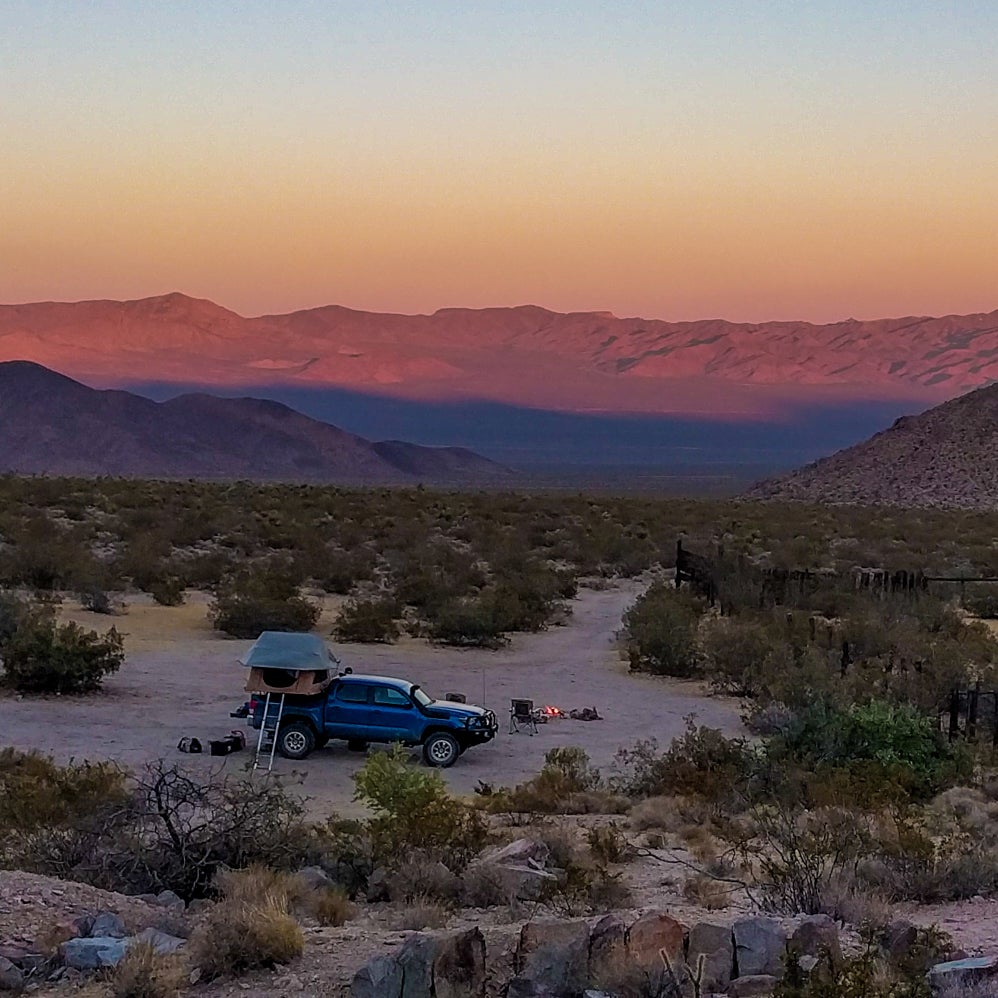As I’ve thoroughly established in the past, I am an avowed enemy of sleeping in or on a vehicle while camping. Doing so compromises important things on your truck, such as safety, fuel economy, and handling, while failing to deliver superior camping comfort. But there are times when that compromise is worthwhile. Let’s look at the various in- or on-vehicle camping solutions, and figure out when each one might actually make sense.
Rooftop Tents
Where They Work Best: Instagram.
Pros: Make you look like you're on an African safari; Save space inside your vehicle.
Cons: Size, weight, and outright comfort. Mounted on your roof, those factors spoil your fuel economy, ruin your handling, and may make your vehicle dangerous through challenging off-road terrain. RTTs are also awful in high wind, require you to scale a ladder anytime you want to get in or out, require you to park your truck precisely level, and cost an absolute fortune.
Tips: Invest in a quality ground-tent setup instead.
Bed Caps
Where They Work Best: Dawn patrol.
Pros: The only stealthy solution here. If you’re just looking to grab a few Zs on the side of the road or in a parking lot before hitting the mountain, trail, or water, then crashing under your bed cap will keep you off the pavement and away from prying eyes.
Cons: Zero head room. You basically just crawl in here and pass out.
Tips: If you also need to carry stuff in your bed, then a set of drawers will give you a flat platform on which to sleep, while keeping your stuff organized.
Trailers
Where They Work Best: Bringing all the comforts of home into the wild.
Pros: Easily un-hitched, allowing you to roam free.
Cons: Even trailers built for dedicated off-roading will massively limit your vehicle’s capability, requiring you to chose easy trails, and they’ll still get broken frequently. Even the most luxurious on-road trailers aren’t actually all that comfortable or spacious. And any trailer is going to limit your speed, halve your fuel economy, and cost you an arm and a leg.
Tips: Try before you buy. Trailers are nice to have in camp, but make getting there a real pain. And well-chosen luxury camping gear will probably give you just as much comfort and convenience.
SUVs
Where They Work Best: In a pinch.
Pros: You’ve got one.
Cons: Even more cramped and awkward than a truck bed.
Tips: You’ll need to clear everything out of your truck before your sleeping pad will fit inside. Rubbermaid Action Packers are cheap, weatherproof, and easy to lift in and out.
Campers
Where They Work Best: Going places a trailer can’t.
Pros: Easier to haul than a trailer.
Cons: Even the largest are incredibly cramped inside. Every one I’ve ever seen has been shockingly flimsy, while adding a massive amount of weight to the bed of your pickup. And they’re difficult to remove, so you can’t ditch them to tackle a fun trail, like you can with a trailer.
Tips: Go Fast Campers is leading a new generation of ultralight, ultra-strong camper-RTT hybrids that can actually stand up to real off-roading, while adding a reasonable amount of comfort and convenience in camp.
Just Sleeping in a Freaking Tent
Where They Work Best: Everywhere.
Pros: Light, cheap, comfortable, easy to use.
Cons: It takes a little experience to learn to camp well, which I think is why people are under the impression that hauling a $100,000 trailer behind a $75,000 pickup is somehow a superior solution.
Tips: Buy a , with the garage vestibule. Put inside to make a good floor. Use an with flannel fitted sheets, pillows from home, as many puffy blankets as you need, and wrap one of those around the head of the mattress, to work like a sleeping bag hood.
Buy some nice camp chairs, a folding table, and a good camp stove.
Plug a into your truck. Invest in either a vehicle-mounted awning, or a light shade shelter. Don't forget your Bluetooth speaker.
And there you go: camping outside like this will always give you more space than a trailer or camper, and all the above adds up to only about the weight and expense of a rooftop tent. If you're a scaredy-cat who's convinced someone or something's gonna get you in your sleep, rescue a dog and bring it camping with you.


